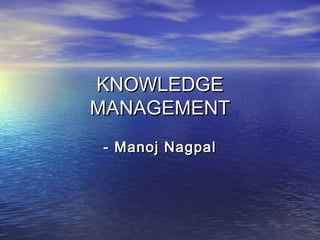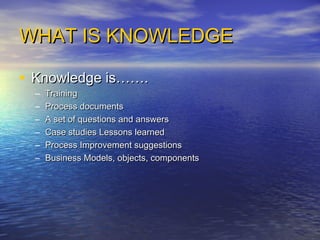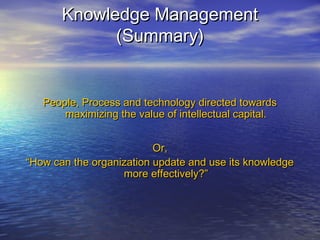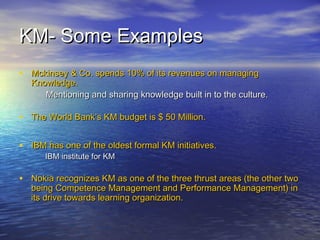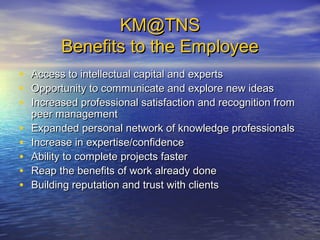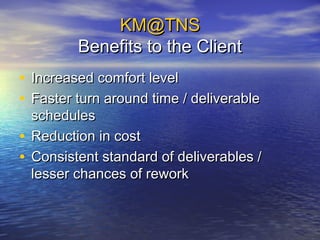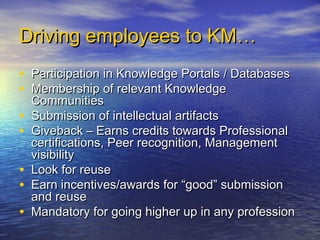The document discusses knowledge management (KM), including different types of knowledge, intellectual capital, and why KM is needed. It defines KM as a framework for capturing, sharing, and creating new knowledge to improve business performance. Challenges of KM include getting employee participation and preventing information overload. Metrics for measuring KM include number of knowledge base users and submissions, and stories of successful knowledge reuse.
